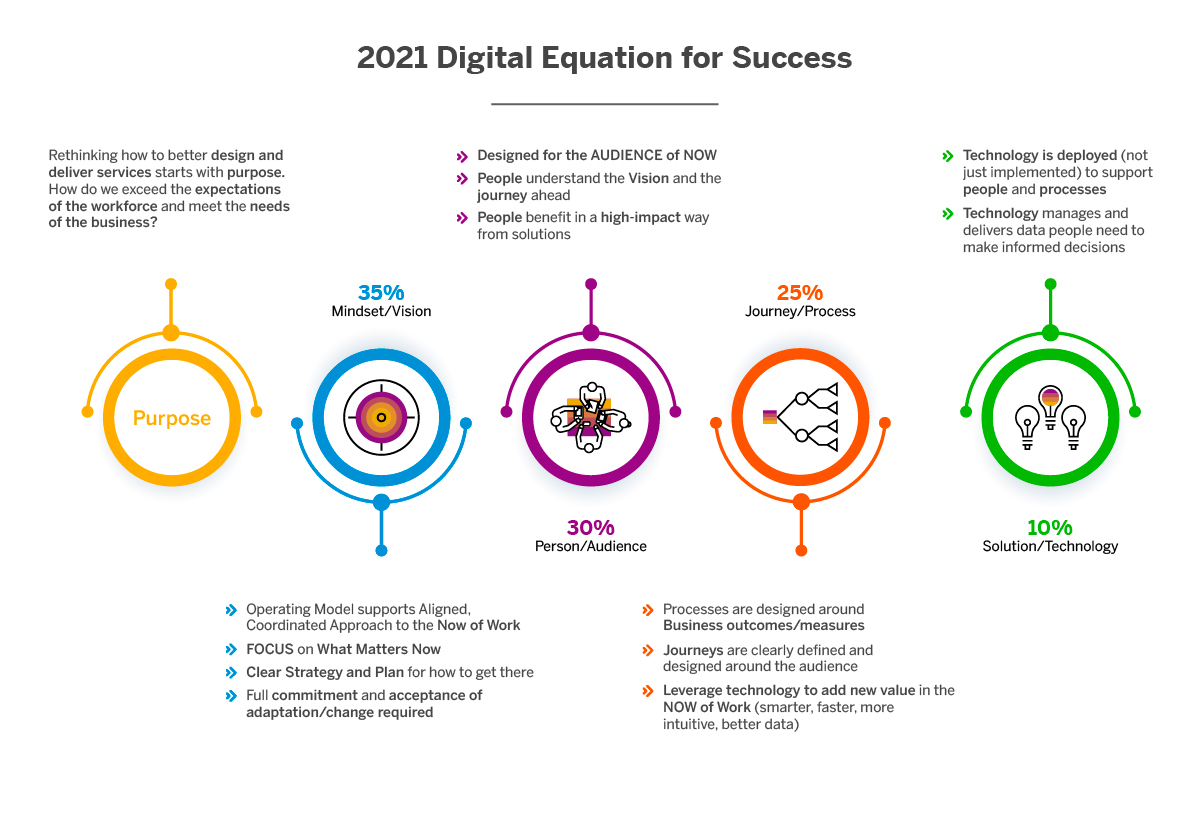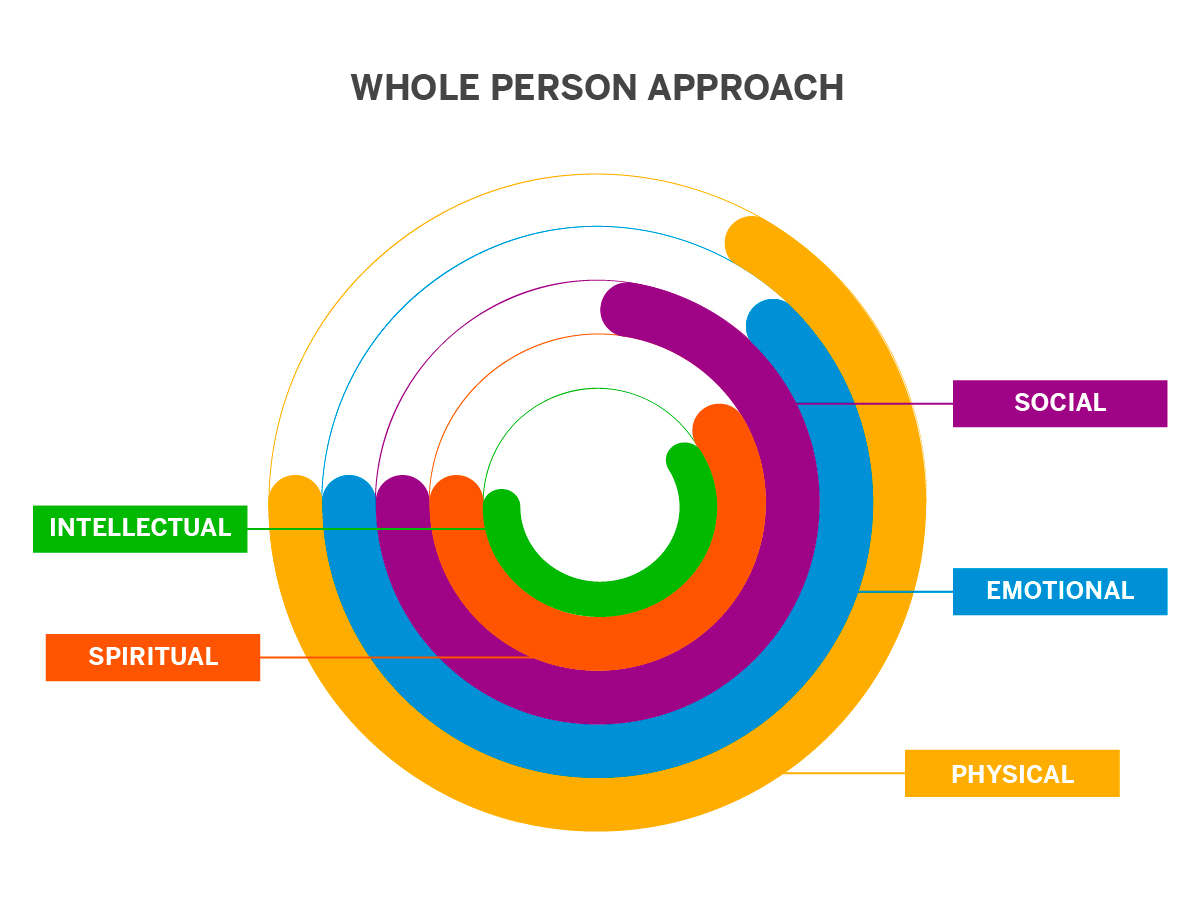2020 ushered us into a new way of working. Organizations are now moving to investing and setting up infrastructures to provide a superior work experience to their people– Hybrid 2.0. SAP organized the SAP HR Connect 2021 to throw some much-needed light on how we can design employee experiences for the hybrid 2.0 world that are holistic, progressive, agile, technology-driven, and most importantly, more human!
Jason Averbook, CEO & Co-Founder, Leapgen, conducted a workshop delving into the ideal way of carving a winning employee experience strategy. Where he provided a step-by-step guide to planning a pandemic-proof EX strategy that transforms employees into growth partners as we transition to newer work models for our brave, evolving hybrid world of work.
The last couple of years has changed the world of work, forever. HR has had to greatly accelerate its pace of developing and implementing experience strategies and tools for employee experiences that have become critical to driving impact for organizations.
Getting to Hybrid 2.0
Transformation is a word that people bring up a lot, but not many truly understand what it means. The word “trans” means radical change and “formation” means how we do things, in this case, ‘how we work’. In the world where we have lived in there are 2 types of “trans” – there is technology transition and there is true transformation. True transformation comes only by following three key steps – Strategy, Deployment & ROI (Run, Optimize, Innovate).
The concept of Hybrid 2.0 needs to be attacked in a very systemic way. And that starts with developing the right Digital People Strategy. Deploying the strategy is the next step and requires a very large effort that includes programs, change, adaptation, unlearning, organizational model and it may also at some point involve the implementation of technology.
Implementation is a part of the deployment. A lot of organizations are great at implementation but not deployment and that’s where a lot of strategies fall apart.
Once the strategy has been deployed, the third step is to think about how to sustain the value we get from it. This is where ROI or RUN, OPTIMIZE, INNOVATE comes into play.
The World of Work in 2021
In the world we live in today, building strategies is really hard. Previously, there was a point in time where we could make 5 – 3 year strategies/plans. But in today’s day and age of uncertainty, there is a much higher need for agile strategies – one’s that can shift, flex, contract based on the things happening around us.
We are human inside of work as much as we are outside of it. In the world of HXM, this means that we need to be listening at all times to the signals and the people and react with our strategies intact.
We need to respond by going to our core – one that makes us all human, and think about recovery by focusing on being human-centered. Because people are our most important assets and how we make them feel is what is going to allow us to get through these changing times.
Some of the impacts we are seeing on the NOW of work:
- Human-centered recovery strategy
- Need for systems and tools to drive efficacy
- Hybrid work is not a fad and will be here forever
- HR to act with agility and response-ability
- Digital & distributed models of work
- Concerted policy efforts to drive systemic change
- Optimism and uncertainty at the same time
- Attracting and retaining labor now looks vastly different
Right now, HR has the largest opportunity that it has ever had – to shape the NOW of work.
Digital Equation for Success
Remarking on the pandemic’s effect on every aspect of work and life, Satya Nadella, CEO of, Microsoft said, “We saw two years of digital transformation in two months”. The question that now remains is if this is also the case with the HR function?
Digital transformation is meant to touch everything from marketing to sales to everything done in Human Resources. The shift from HCM to HXM is essentially about transformation and the need for every HR organization in the world to digitally transform. Most people think that digital is all about technology, but that’s not true. Digital is not just technology, rather it is a component of it.
It is time we rethink how to better design and deliver services. This starts by bringing back the focus on understanding the purpose of our organization and how we want to serve with it. HR leaders have put this purpose into action by digitally transforming their functions. They can do this by focusing on 4 key areas:
- 35% of digital success comes from ensuring you have a clear, concise, understood mindset that is aligned to the purpose and has strong measures of success.
- 30% is designing for the audience of NOW. This comes from truly knowing your people- not just skills and qualifications but what allows them to bring their best selves to work.
- 25% comes from designing journeys. Processes generate data, but journeys create feelings and connections between people and their purpose.
- 10% of success comes from the technology deployed (not just implemented) to support the people and processes. Essentially acting as the fuel needed to create journeys.
Digital transformation is made up of each of these components. Leaving out even one of these reduces the effectiveness of the overall transformation.
Ultimately when we think about HXM, what we need to do is LISTEN & ACT. Listen to the people and act on it immediately – not once a year on an engagement survey, but NOW! As organizations and HR leaders we need to do a better job at listening, to truly understand the human side of our workforce.

Experience Needs to be: Shift to B to Me
The real goal of HXM and true transformation is the shift from a B2B focus (where the tools used are in place to make the HR function more efficient) to a B2Me focus. This shift will enable employees and managers with tools that make them successful – not the HR but the organization.
B2Me means personalization, the kind that can only be achieved by truly knowing our people. We need to build workforce tools that not only connect people but build connections between the people. And we need to do this with a concept called – Hands, Heads & Hearts.

The formula that defines experience is simple:
Transaction + Interaction = Experience
Adding interaction to transactions enriches it to create an experience. The interaction is where the trust is built. The Hands, Heads & Hearts concept is a simple way to think about how we need to shift work as part of the digital transformation.
Machines are exceptional at hands work, or what is called RAD (Repeatable, Auditable & Documented) work and that is where we should leverage technology. People, on the other hand, are good at the heart’s work – at building connections. It is time we start building functions in a way where the machines are doing the transactional work, while people focus on building stories around the data provided by the machines.
The True Value of Digital
Digital is not about eliminating the human element, rather it enhances it. Work no longer looks the way it used to 2 years ago, and that’s why HR can’t act the same way it did previously. HR needs to become agile in these fragile times.
In a recent survey, Future Workforce found that if HR could double its budget, HR leaders from most organizations would like to allocate these additional funds to improve the employee experience (44%) and existing technology (37%).
Before the pandemic, we used to have 2 types of experiences – Physical & Digital/Technical. Today, we have only one – the “Workforce or Human Experience”. To achieve this experience to the fullest, we have to stop implementing technology and move to deploying human capabilities.
Adding technology doesn’t change the HR function or its interaction with the workforce – but it definitely helps with it. However, we have to remember that technology without change is nothing. And for people to adopt transformation, organizations will have to adapt.
Human-Centered Design Leverages Personas
You cannot talk about HXM, without talking about humans, and the voice of the employees/customers. Deploying technology was previously done as a single spread. This approach doesn’t work anymore. We need to meet people where they are with an empathetic lens to the work they do and how they do it.
We need to create personas by listening to people who seem like the persona and study them more carefully to understand- the best ways to communicate with them, their needs and expectations, roadblocks, etc. When we understand a persona at that level, we can deploy messages in a way that meets the persona where they are and with what they need.
Benefits of personas:
- Companywide understanding of your workforce
- Encourages empathy-driven design
- Digestible workforce segments
- Uncover workforce needs/common frustrations
- Test, refine, and improve experiences
- Anticipate future opportunities
When we have this kind of insight into our workforce, we can take the “Whole Person Approach”. This approach looks at every aspect of the employee – Physical, Emotional, Social, Spiritual, and Intellectual to design solutions that attack every problem from all angles.

COVID has given HR the passport to reset, rethink, reimagine, and realize that the next normal is probably going to be no normal that we are used to and that growth is coming at a very large scale. We need to plan and prepare for this by shifting focus from using technology for transition to using it for transformation. And embrace the fact that everything about the digital workforce & HXM is now HR’s responsibility.
HR needs to now deliver experiences, not technology – solutions, not toolkits; enable not monitor; people capabilities, not technology features! And all of this has to be done while considering the measurable outcomes of the business.
One of the most magical things about the shift from HCM to HXM is realizing that technology is the fuel that will allow us to drive to what the NOW of work is.
Check out more posts:



